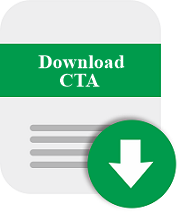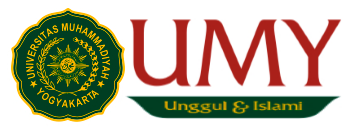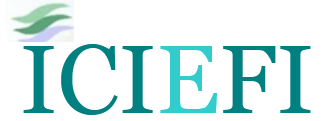Investigating Institutional Investors' Behaviours toward Cash Waqf Linked Sukuk (CWLS) using DTPB
Abstract
Cash Waqf Linked Sukuk (CWLS) is a newly developed social investment instrument to stimulate Indonesia's productive waqf movement. CWLS has numerous commercial and social benefits and worship values. However, despite these advantages, it takes a long time for CWLS to collect funds due to various challenges and inadequate investors' response rate, which is still far from expectation. Thus, this study looks into the contributing factors and antecedence that entail and determine the decision of an institutional investor to invest. The theoretical framework applied the decomposed theory of planned behavior (DTPB). Additionally, it highlights a new perspective by delivering the specific determinants that impact investors' attitudes, moral norms, and perceived behavior control. These factors offer a deep understanding of the association and determine their definite effects on intentions. Based on a survey of 250 respondents, analyzed using partial least squares – structural equation modeling (PLS-SEM), it was found that the proposed hypotheses were accepted. Above all, the important finding is the contribution of attitude as the dominant determinant impacting the investor's intention. It was mainly driven by perceived Ihsan as part of the Muslim religiosity dimension reflecting the spirit to do good. This study's findings provide deeper insight into untested behavior literature. This study will also benefit policymakers, academicians, and future researchers.
Keywords
Full Text:
PDFReferences
Adam, A. A., & Shauki, E. R., (2014). Socially responsible investment in Malaysia: Behavioral framework in evaluating investors’ decision making process. Journal of Cleaner Production, 80, 224–240.
Ahmat, N. C., Radzi, S. M., Zahari, M. S. M., Muhammad, R., Aziz, A. A., & Ahmad, N. A., (2011). The effect of factors influencing the perception of price fairness towards customer response behaviors. Journal of Global Management, 2(1), 22–38.
Ajzen, I., Madden, T., (1986). Prediction of Goal-Directed Behavior : Attitudes, Intentions, and Perceived Behavioral Control. Journal of Experimental Social Psychology, 474, 453–474.
Ajzen, I., (1985). From Intentions to Actions: A Theory of Planned Behavior. In J. Kuhl & J. Beckmann (Eds.), Action Control, SSSP Springer Series in Social Psychology, (pp. 11–39). Berlin, Heidelberg: Springer.
Ajzen, I., (1991). The theory of planned behavior. Organizational Behavior and Human Decision Processes, 50, 179–211.
Ajzen, I., Joyce, N., Sheikh, S., & Cote, N. G., (2011). Knowledge and the prediction of behavior: The role of information accuracy in the theory of planned behavior. Basic and Applied Social Psychology, 33(2), 101–117.
Alifiandy, M. M., & Sukmana, R., (2020). The Influence of Planned Behaviour Theory and Knowledge Towards the Waqif Intention in Contributing Waqf. Jurnal Ekonomi Dan Bisnis Islam (Journal of Islamic Economics and Business), 6(2), 260. https://doi.org/10.20473/jebis.v6i2.22624
Andi, W. M., Rahyuda, I. K., Sukaatmaja, I. P. G., & Giantari, I. G. A. K., (2021). Antecedents and Consequences of Intention to Become a Customer: A Case Study of Islamic Banks in Indonesia. Journal of Asian Finance, Economics and Business, 8(4), 827–839. https://doi.org/10.13106/jafeb.2021.vol8.no4.0827
Anindhita, A. E., & Widana, I. G. N. O., (2022). Optimizing the Role of Cash Waqf Linked Sukuk for State Development. Al-Iqtishad: Jurnal Ilmu Ekonomi Syariah (Journal of Islamic Economics), 14(1), 185–212. https://doi.org/10.15408/aiq.v14i1.24195
Arias, E., (2019). How Does Media Influence Social Norms? Experimental Evidence on the Role of Common Knowledge. Political Science Research and Methods, 7(3), 561–578. https://doi.org/10.1017/psrm.2018.1
Ascarya & Suharto, U., (2021). Integrated Islamic Social and Commercial Finance to Achieve SDGs. In M. M. Billah (Ed.), Islamic Wealth and the SDGs Global Strategies for Socio-economic Impact (pp. 105–127). Cham: Palgrave Macmillan. https://doi.org/DOI: 10.1007/978-3-030-65313-2_6
Aziz, S., Afaq, Z., & Bashir, U., (2018). Behavioral Intention to Adopt Islamic Banking in Pakistan: A Study Based on Theory of Planned Behavior. Journal of Islamic Business and Management (JIBM), 8(2), 407-422. https://doi.org/10.26501/jibm/2018.0802-005
Badan Wakaf Indonesia (BWI). (2020). Laporan Hasil Survey Index Literasi Wakaf 2020. Badan Wakaf Indonesia. Retrieved from https://www.bwi.go.id/wp-content/uploads/2020/05/LAPORAN-SURVEY-LITERASI-WAKAF-NASIONAL-TAHUN-2020.pdf
Badan Wakaf Indonesia, Forum Wakaf Produktif, & Kementerian Keuangan Republik Indonesia. (2018). Feasibility Study: Cash Wakaf Linked Sukuk. Badan Wakaf Indonesia. Retrieved from https://www.bwi.go.id/cash-waqf-linked-sukuk/
Bandura, A., (1977). Self-efficacy: Toward a unifying theory of behavioral change. Psychological Review, 84(2), 191–215. https://doi.org/10.1037/0033-295X.84.2.191.
Bang, H.-K., Ellinger, A. E., Hadjimarcou, J., & Traichal, P. A., (2000). Consumer concern, knowledge, belief, and attitude toward renewable energy: an application of the reasoned action theory. Psychology and Marketing, 17(6), 449–468.
Bangs, D. H. J., (1995). The Business Planning Guide: Creating a Winning Plan for Success. England: Kaplan Publishing.
Bank Indonesia, Kementrian Keuangan Republik Indonesia, Badan Wakaf Indonesia, & Kementrian Agama RI., (2021). Cash Waqf Linked Sukuk: Annual Report. Bank Indonesia. Retrieved from https://www.bi.go.id/id/edukasi/Pages/Laporan-Tahunan-Cash-Waqf-Linked-Sukuk-2021.aspx
Baqutayan, S. M., & Mahdzir, A. M., (2017). The psychology theories of waqf-giving behaviors. Journal of Economic and Social Thought, 2(2), 106–120. https://e-resources.perpusnas.go.id:2350/docview/1873027697/10B524F6CCAD47DAPQ/5?accountid=25704
Barber, B. M., Morse, A., & Yasuda, A., (2019). Impact Investing. NBER Working Paper Series, 26582.
Charities Aid Foundation., (2014). Why We Give. Charities Aid Foundation. Retrieved from https://www.cafonline.org/docs/default-source/about-us-publications/caf-why-we-give-jan14.pdf
Chin, W. W., (1998). SEM-PLS: Issues and opinion on structural equation modeling. MIS Quarterly (pp. vii-xvi). Minnesota, United States: Management Information Systems Research Center.
Çizakça, M., (1998). Awqaf in History and Its Implications for Modern Islamic Economies. Islamic Economic Studies, 6(1), 43–70.
Cokrohadisumarto, W. bin M., Zaenudin, Z., Santoso, B., & Sumiati, S., (2020). A study of Indonesian community’s behaviour in paying zakat. Journal of Islamic Marketing, 11(4), 961–976. https://doi.org/10.1108/JIMA-10-2018-0208
Davison, W. P., (1983). The third Person Effect in Communication. Public Opinion Quarterly. 47, 1–5.
Drezner, N.D, Huehls, F., (2015). Fundraising and institutional advancement: theory, practice, and new paradigms (pp. 177). New York and London: Routledge. https://doi.org/10.1080/1360080x.2016.1150552
Fishbein, M., & Ajzen, I., (2010). Predicting and Changing Behavior: The Reasoned Action Approach. London: Psychology Press.
Fishbein, M., & Ajzen, I., (2011). Predicting and Changing Behavior: The Reasoned Action Approach. London: Psychology Press. https://doi.org/10.4324/9780203838020
Fornell, C., & Larcker, D. F., (1981). Evaluating Structural Equation Models with Unobservable Variables and Measurement Error. Journal of Marketing Research, 18(1), 39–50. https://doi.org/https://doi.org/10.1177/00222437810180010
Gefen, D., & Straub, D., (2005). A Practical Guide To Factorial Validity Using PLS-Graph: Tutorial And Annotated Example. Communications of the Association for Information Systems, 16(5), 91–109. https://doi.org/https://doi.org/10.17705/1CAIS.01605
Hafandi, A., & Handayati, P., (2021). Is Cash Waqf Linked Sukuk ( CWLS ) Less Than Ideal According to Islamic Laws ?. Studies of Applied Economics, 39(12). https://doi.org/10.25115/eea.v39i12.6207
Haigh, M., (2008). What counts in social managed investments: evidence from an international survey. Adv. Public Interest Account, 13, 35-62.
Hair, J. F., Hult, G. T. M., Ringle, C. M., & Sarstedt, M., (2017). A primer on partial least square structural equation modeling (PLS-SEM) (2nd ed.). USA: Sage Publications.
Hansen, J. M., Saridakis, G., & Benson, V., (2018). Risk, trust, and the interaction of perceived ease of use and behavioral control in predicting consumers’ use of social media for transactions. Computers in Human Behavior, 80, 197–206. https://doi.org/10.1016/j.chb.2017.11.010
Hoque, M. E., Hassan, M. K., Hashim, N. M. H. N., & Zaher, T., (2019). Factors affecting Islamic banking behavioral intention: the moderating effects of customer marketing practices and financial considerations. Journal of Financial Services Marketing, 24(1–2), 44–58. https://doi.org/10.1057/s41264-019-00060-x
Hosen, M. N., Maulana, A., Farhand, M. Z., & Rahman, M. F., (2022). Evaluating the Fundraising Process of the World’s First Cash Waqf-Linked Sukuk in Indonesia. Qudus International Journal of Islamic Studies (QIJIS), 10(1), 175–214.
Huang, J., and Nicol, D. M., (2010). A Formal-Semantics-Based Calculus of Trust. IEEE Internet Computing, 14(5), 38-46.
Husin, M. M., & Rahman, A. A., (2016). Do Muslims intend to participate in Islamic insurance? Analysis from theory of planned behaviour. Journal of Islamic Accounting and Business Research, 7(1), 42–58.
Ismal, R., (2022). Identifying The Optimal Cash Waqf Linked Sukuk : Indonesian Experience. Hamdard Islamicus, XIV(3), 9–27.
Jalil, M. I. A., Lada, S., Pitchay, A. A., Bakri, M. A., Ghazali, M. F., & Hamid, M. R. A., (2022). Infaq during movement lockdown: the perspective from social responsibility theory. International Journal of Islamic and Middle Eastern Finance and Management, 15(2), 441–460. https://doi.org/10.1108/IMEFM-01-2021-0020
Kamil, M., & Kasri, R. A., (2021). Motivation for Charitable Act : A Case Study of Cash Waqf during Pandemic in Indonesia. Journal of Contemporary Business and Islamic Finance, 1(1), 32–49.
Kock, N., & Lynn, G., (2012). Lateral Collinearity and Misleading Results in Variance-Based SEM: An Illustration and Recommendations. Journal of the Association for Information Systems, 13(7), 546–580. https://doi.org/10.1002/ctpp.19740140604
Kock, N., (2021). WarpPLS User Manual: Version 7.0. Laredo, Texas USA: ScriptWarp Systems.
Kock, N., (2022). Using causality assessment indices in PLS-SEM. Data Analysis Perspectives Journal, 3(5), 1–6. https://scriptwarp.com/dapj/2022_DAPJ_3_5/Kock_2022_DAPJ_3_5_CausalityAssessment
Li, W., Mao, Y., & Liu, C., (2022). Understanding the Intention to Donate Online in the Chinese Context: The Influence of Norms and Trust. Cyberpsychology, 16(1), 1-20. https://doi.org/10.5817/CP2022-1-7
Loehlin, J., (1998). Latent Variable Models: An Introduction to Factor, Path, and Structural Analysis (5th ed.). Mahwah, New Jersey: Lawrence Erlbaum Associates.
Mahudin, N. D. M., Noor, N. M., Dzulkifli, M. A., & Janon, N. S., (2016). Religiosity among Muslims: A Scale Development and Validation Study. Makara Human Behavior Studies in Asia, 20(2), 109–120.
Mangleburg, T. F., Doney, P. M., & Bristol, T. B., (2004). Shopping with friends and teens ’ susceptibility to peer influence. Journal of Retailing, 80(2), 101–116. https://doi.org/10.1016/j.jretai.2004.04.005
Manstead, A. S. R., (2000). The role of moral norm in the attitude–behavior relation. In D. J. Terry & M. A. Hogg (Eds.), Attitude, behavior, and social context: The role of norms and group membership (pp. 11–30). New Jersey: Lawrence Erlbaum Associates.
Fakhrurrazi, A. M., (2020). Determinants of Corporate Waqf Contribution from the Perspective of Muslims in Malaysia. ICR Journal, 11(2), 252–276. https://doi.org/10.52282/icr.v11i2.768
Muslichah, I., & Sanusi, S., (2019). The effect of religiosity and financial literacy on intention to use Islamic banking products. Asian Journal of Islamic Management (AJIM), 1(2), 85–92. https://doi.org/10.20885/ajim.vol1.iss2.art2
Mutmainah, L., Fauziyyah, N. E., & Taqwa, K. Z., (2022). Cash Waqf Linked Blue Sukuk ( CWLBS ) For Sustainable Marine Ecosystem : a Conceptual Model. BWI Working Paper Series.
Nurwahidin, Suhail, A’yun, A. Q., Hamzah, M. Z., & Fahruroji, (2021). THE ROLE OF RELIGIOUS LEADERS TO INCREASE SOCIETY AWARENESS IN. PROSIDING PERKEM Ke-15 (2020-2021). Indonesia. https://doi.org/ISSN: 2231-962X
Octarina, E., Hartoyo, H., & Beik, I. S., (2019). Customer Purchase Intention on Sharia Mutual Fund Products: a Tpb Approach. Journal of Consumer Sciences, 4(1), 37-47. https://doi.org/10.29244/jcs.4.1.37-47
Osman, A. F., (2014). An Analysis of Cash Waqf Participation Among Young. 9th International Academic Conference, April, 572–584. Conference conducted at the International Institute of Social and Economic Sciences, KL. Malaysia.
Osman, A. F., Mohammed, M., & Fadzil, A., (2016). Factor Influencing Cash Waqf Giving Behavior: a Revised Theory of Planned Behavior. Journal of Global Business and Social Entrepreneurship (GBSE), 1(2), 12–25. http://gbse.com.my/isimarch16/GBSE 1(2) 12-25 (March 2016).pdf
Park, S., & Shin, J., (2017). The influence of anonymous peers on prosocial behavior. PLoS ONE, 12(10), 1–21. https://doi.org/10.1371/journal.pone.0185521
Parker, D., Manstead, A. S. R., & Stradling, S. G., (1995). Extending the theory of planned behaviour: The role of personal norm. British Journal of Social Psychology, 34(2), 127–138. https://doi.org/10.1111/j.2044-8309.1995.tb01053.x
Pasek, J., & Kenski, K., (2006). America’s Youth and Community Engagement: How Use of Mass Media Is Related to in 14- to 22-Year-Olds. Communication Research, 33(3), 115–135.
Peter, J. P., & Olson, J. C., (2010). Consumer Behavior & Marketing Strategy. In McGraw-Hill/Irwin (Ninth Ed.). New York: Mc-Graw-Hill/Irwin.
Potter, W. J., (2011). Conceptualizing Mass Media Effect. Journal of Communication, 61(5), 896–915. https://doi.org/10.1111/j.1460-2466.2011.01586.x
Putri, M. M., Tanjung, H., & Hakiem, H., (2020). Strategi Implementasi Pengelolaan Cash Waqf Linked Suku K Dalam Mendukung Pembangunan Ekonomi Umat: Pendekatan Analytic Network Process (ANP). AL-INFAQ: Jurnal Ekonomi Islam, 11(2), 204–225.
Rahayu, R. N. I., Pramuka, B. A., & Wahyudi, (2021). The Influence of Information Media, Knowledge, and Subjective Norms on Interest in Performing Cash Waqf. International Sustainable Competitiveness Advantage (SCA), 11(1), 638–647. http://www.jp.feb.unsoed.ac.id/index.php/sca-1/article/view/2775
Rahman, A. A., Asrarhaghighi, E., & Rahman, S. A., (2015). Consumers and halal cosmetic products: Knowledge, religiosity, attitude and intention. Journal of Islamic Marketing, 6(1), 148–163. https://doi.org/10.1108/JIMA-09-2013-0068
Rasoolimanesh, M. S., Nejadi, M., Mee, L. T., & Razak, N. A., (2017). Full collinearity as a new criterion to assess discriminant validity of composite (formative) and reflective measurement models. 9th International Conference on PLS and Related Methods (PLS’17), April. Indonesia.
Rigdon, E. E., (2016). Choosing PLS path modeling as analytical method in European management research : A realist perspective. European Management Journal, 34(6), 1–8. https://doi.org/10.1016/j.emj.2016.05.006
Rizal, H., & Amin, H., (2017). Perceived ihsan, Islamic egalitarianism and Islamic religiosity towards charitable giving of cash waqf. Journal of Islamic Marketing, 8(4), 669–685.
Rofiqo, A., & Sari, D. N., (2022). Transparency and Reputation as the Factor Influences to the Intention Waqf : Empirical Studies in Gontor Institution. Journal of Sharia Finance and Banking, 2(1), 1–10.
Roundy, P., Holzhauer, H., & Dai, Y., (2017). Finance or philanthropy? Exploring the motivations and criteria of impact investors. Social Responsibility Journal, 13(3), 491–512.
Sarstedt, M., Bengart, P., Shaltoni, A. M., Lehmann, S., Sarstedt, M., Bengart, P., Shaltoni, A. M., & Lehmann, S., (2017). The use of sampling methods in advertising research : a gap between theory and practice. International Journal of Advertising, 37(4), 650-663. https://doi.org/10.1080/02650487.2017.1348329
Seetharaman, A., Niranjan, I., Patwa, N., & Kejriwal, A., (2017). A Study of the Factors Affecting the Choice of Investment Portfolio by Individual Investors in Singapore. Accounting and Finance Research, 6(3), 153–168.
Shukor, S. A., Anwar, I. F., Aziz, S. A., & Hisham, S., (2017). Muslim Attitude Towards Participation in Cash Waqf: Antecedents and Consequences. International Journal of Business and Society, 18(SI), 193–204.
Sinclair, J. M., (2010). Collins English Dictionary & Thesaurus (2nd ed.). USA: Harper Collins Publisher.
Siregar, K. H., Cho, C., Manday, R., Efendi, B., (2021). MODEL CASH WAQF LINKED SUKUK ( CWLS ): INSTRUMEN KETAHANAN PANGAN INDONESIA SDGs. Jurnal Kajian Ekonomi Dan Kebijakan Publik, 6(2).
Smith, J. R., & Mcsweeney, A., (2007). Charitable Giving: The Effectiveness of a Revised Theory of Planned Behaviour Model in Predicting Donating Intentions and Behaviour. Journal of Community & Applied Social Psychology, 17(5), 363–386. https://doi.org/10.1002/casp
Sukrianto, M., Alfansi, L., & Alwi, R. A., (2021). Moderating Effect of Ulama Endorsement on the Relationship between Trust in Zakat Institution and The Intention of Indonesian Millennial to Pay Zakat. The Internastional Journal of Social Sciences World, 3(2), 288–301. https://doi.org/10.5281/zenodo.5646623
Tanjung, H., (2022). Wakaf dan Ekonomi Syariah. Jakarta: PT Elex Media Komputindo.
Tanjung, H., & Windiarto, A., (2021). Role of Cash Waqf Linked Sukuk in Economic Development and International Trade. Signifikan: Jurnal Ilmu Ekonomi, 10(2), 275–290.
Taylor, S., & Todd, P. A., (1995). Understanding information technology usage: A test of competing models. Information Systems Research, 6(2), 144–176. https://doi.org/10.1287/isre.6.2.144
Tenenhaus, M., Vinzi, V., Chatelin, Y., & Lauro, C., (2005). PLS path modeling. Computational Statistics & Data Analysis, 48(1), 159–205. https://doi.org/https://doi.org/10.1016/J.CSDA.2004.03.005
Unite for Sight. (2015). The Motivation for Giving: The Story Of Unlikely Philanthropists. African Philanthropy Forum. Retrieved from https://africanpf.org/toolkit/motivation-giving-story-unlikely-philanthropists/
Urbach, Nils & Ahlemann, F., (2010). Structural Equation Modeling in Information Systems Research Using Partial Least Squares. Journal of Information Technology Theory and Application (JITTA), 11(2), 5–40. https://aisel.aisnet.org/jitta/vol11/iss2/2
Warsame, M. H., & Ireri, E. M., (2016). Does the theory of planned behaviour (TPB) matter in Sukuk investment decisions?. Journal of Behavioral and Experimental Finance, 12, 93–100. https://doi.org/10.1016/j.jbef.2016.10.002
Wu, I. L., & Chen, J. L., (2005). An extension of Trust and TAM model with TPB in the initial adoption of on-line tax: An empirical study. International Journal of Human Computer Studies, 62(6), 784–808. https://doi.org/10.1016/j.ijhcs.2005.03.003
Yoshida, E., (2019). FinTech-Enabled Cash Waqf: Effective Intermediary of Social Finance. Revitalization of Waqf for Socio-Economic Development (pp. 43–59). London: Springer International Publishing.
Yunita, P., (2020). Cash Waqf Linked Sukuk (CWLS) Model: For Indonesia Sustainable Food Security. AL-AWQAF, 13(1), 59–72.
Yusoff, R., Rahman, S. A., Mohamed, W. N., Benrit, P., & Darus, F., (2017). Predicting the Behavioural Intention for Cash Waqf: Evidence from Malaysia and Thailand. Conference on Philanthropy for Humanitarian Aid (CONPHA) 2017, May, 33–49. Brunei.
DOI: https://doi.org/10.18196/ijief.v6i2.16950
Refbacks
- There are currently no refbacks.
Copyright (c) 2023 International Journal of Islamic Economics and Finance (IJIEF)

This work is licensed under a Creative Commons Attribution-ShareAlike 4.0 International License.
International Journal of Islamic Economics and Finance (IJIEF)
International Program for Islamic Economics and Finance
Department of Economics
Faculty of Economics and Business
Universitas Muhammadiyah Yogyakarta
Pascasarjana Building, Ground Floor
Jl. Brawijaya (Ringroad Selatan), Kasihan, Bantul
D.I. Yogyakarta 55183, INDONESIA
Official email: ijief@umy.ac.id













1.jpg)